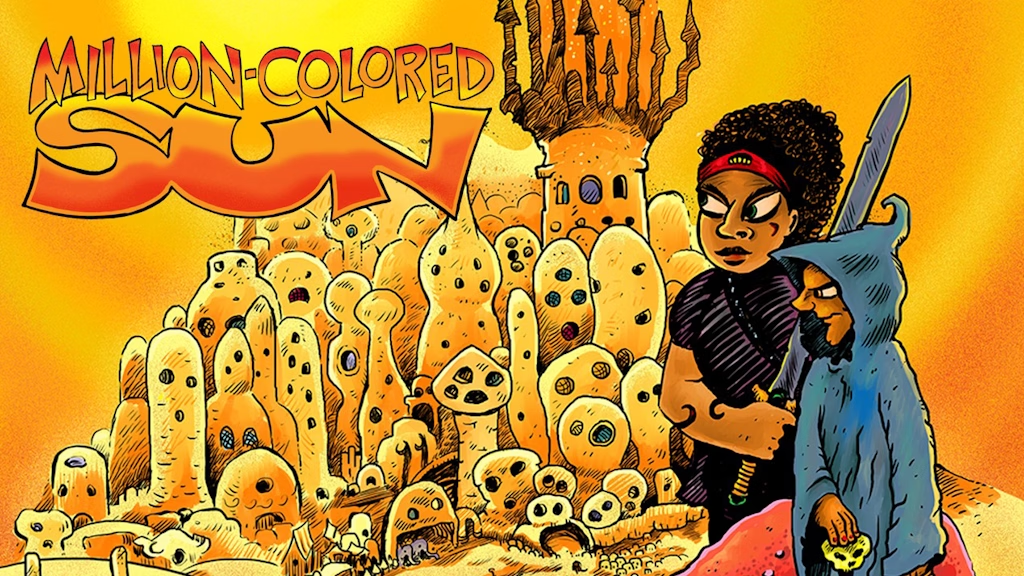We may earn money or products from the companies mentioned in this post.
You’ve probably already figured out that I took a break from blogging last week because of the holidays. I was tempted to use the same excuse this week, but decided to start the new year off on the right foot and finally get around to the Cinemechanix posts I hinted at a few months ago before I decided to write a bad fantasy novel and a (I hope) good book about being a GM (which should be on sale when I write next week’s blog; I’ll let you know where to buy it then).
As I mentioned in the first post about Cinemechanix, the new system grew out of ideas for a 3rd edition of QAGS. After running the game for over a decade, I’d noticed a few problems. Most of them aren’t a big deal if all the players are on the same page (they rarely come up when I’m playing a game with the Hex crew, for example), but they get annoying if the GM and players have interpreted the rules differently or have different expectations. There are also some that rely on applying “fixes” that most regular QAGS GMs (or at least most of the ones I’ve played with) apply (sometimes without even realizing it) but that aren’t in the book. Since the whole reason for doing a new edition of the game was to fix the problems, I started by making a list of what the problems were. I’m going to revisit that list this week to show you the starting point. In future posts, I’ll talk about how trying to fixing those problems morphed the system into something that wasn’t really QAGS anymore.
The Stats Are All Independent
A lot of the problems with QAGS from a game standpoint is that (with the exception of Skills) the different Words don’t “stack” with one another since you’re always rolling against one specific Word. If you’re rolling your “Soldier” Job to punch somebody, that’s the only Word that matters for that particular roll. A 90-pound weakling with a Body of 8 punches just was well as a tank with a Body of 16. This isn’t very “realistic” and no doubt drives min-maxers crazy. That doesn’t really bother me, but it does lead to weird things like the wonky Second Chance Rolls rule and having to roll Weakness before you make the roll for the thing you’re trying to do. Another problem is that it makes character design extremely dependent on how your GM runs the game because of the next problem.
Which Stat To Use Relies Heavily On GM Judgement
Since you’re always rolling against a single stat, the stats that the GM tends to tell you to roll against plays a huge roll in determining how often your character succeeds. While there are guidelines in the rules about when to use Gimmick or Job and when to fall back on Body, Brain, or Nerve, which Word gets used often depends on how broadly or narrowly the GM interprets Jobs and Gimmicks. If the GM interprets Jobs and Gimmicks broadly, you’re going to use them for nearly every roll and your Body, Brain, and Nerve don’t really matter. If he interprets them narrowly, your Body, Brain and Nerve are going to be far more important than Job and Gimmick Numbers. If you put your best Numbers in Body, Brain, and Nerve and the GM asks for Job rolls for almost everything, your character is going to fail more often (and vice versa).
It’s Hard To Differentiate Characters in “Team” Settings
Since characters usually just have one Job, Skills and Gimmicks are the only way to differentiate characters in games where everyone has the same basic Job (like “Spy” or “Monster Hunter”). Different writers have found different ways of getting around this problem, but none of them is completely satisfactory. We want to keep characters simple, but the “one of each Word” set-up can be limiting. This can also be a problem if you want a character with one aspect of Body, Brain, or Nerve that’s better or worse than the basic Number would indicate (like if you want a character who’s really strong but clumsy) since you have to waste your Gimmick or Weakness on the outlier trait.
Success Degree is Very Random
QAGS was initially designed for pick-up games, so the decision to roll a single d20 was in part so you only needed one die to play. Because of math things involving bell curves and stuff that I can barely grasp if someone explains it to me using small words and lots of pictures, rolling a single dice means that your number only affects your chance of success, not how well you do. A character with a Number of 14 is twice as likely to succeed as a character with a Number of 7 (70% chance vs. 35% chance), and can succeed with a higher roll, but he’s just as likely to roll a 1 as a 14 (or a 20, for that matter). If you were rolling, for example, 3d6, not only would the character with a 14 succeed a lot more often than the guy with a 7 (73%-ish to about 16%, based on ballpark math from a random bell curve chart I googled), the result is generally going to be higher (somewhere around 65% of rolls are going be be between 8 and 14, with 25% or rolls being a 10 or 11). Basically, the random roll of the die has a lot more to do with success than your character’s stats, so you get a lot more situations where the Heavyweight Champ gets knocked out by the random nerd. Again the lack of “realism” here doesn’t really bother me, but it can lead to situations that don’t make a lot of sense in terms of story.
Even the addition of Skills in Second Edition doesn’t really improve things, since they add to the target number rather than the Success Degree (though I’ve noticed that a lot of people misread that and add Skill Bonuses to the roll instead, which brings us to the next problem).
Nobody Understands How The Rolls Work
In QAGS, you want to roll under your target number, but you want a high roll. This confuses a lot of people, in part because in the most well-known “roll-under” mechanic (at least when QAGS was released), 2nd Edition D&D Non-weapon Proficiencies, a lower roll is better. So a lot of people assume they want to roll low. To help combat this misconception, we came up with the “Price is Right” explanation: You want to get as close to your roll without going over. This helps (though I still meet new players who think they’re supposed to roll low), but creates a new problem of people thinking that the difference between the target number is important and always telling the GM “I got 14 out of 15” or something. Getting across that the number you’re rolling against only determines whether you succeed or fail, not how well you do (that’s all based on the roll, regardless of target number) is tricky.
The “One Roll For Attack and Defense” Idea Sounds Good, But…
The idea of doing one roll for combat and the winner causing damage was meant to reduce the number of rolls you have to make in combat and thereby make combat faster. The fact that we immediately had to write exception rules for ranged combat and combat with multiple opponents should have been a sign that it doesn’t quite work outside of a duel type situation where characters only have one person to attack. Most GMs I’ve played with use the more standard “everybody gets one attack” set-up (“you attack the monster, then the monster attacks you” (two rolls) rather than “you and the monster attack each other”(one roll)) anyway, so fixing this one is just a matter of making the rules fit how people actually play.
Combat Is Really Fucking Deadly
Since damage is based on the difference between attack and defense rolls and a failed defense counts as a zero, an attack from a completely average person without a weapon can cause 11 points of damage if the defense roll fails. Since an average person in QAGS has 11 Health Points and they don’t normally increase, this means most characters can be killed with a single lucky hit. We knew this when we designed the system, but the assumption was that Yum Yums would fix it. If you want your game to be gritty with lots of death, be stingy with the Yum Yums. If you don’t want characters to die very often, give out plenty of YYs for them to use to reduce damage. If GMs get this and give out Yum Yums and players remember to use them (and since the alternative is character death, why wouldn’t you?), this works, but since most QAGS games aren’t of the “life is cheap” variety, it wouldn’t hurt to make the default combat rules less deadly and explain the role of Yum Yums better.
The Experience System. It’s just…
I’m not sure if QAGS First Edition even had an experience system, but if it did it was an afterthought. By the time we wrote Second Edition, we’d realized that most gamers really want some kind of reward system, so we added one. Since I’d just come off a campaign where character advancement was basically a matter of asking the GM “hey, shouldn’t my character be better at basket weaving now, since he’s been weaving all those baskets?” I tried to build a system where the stat increases were tied to things happening in the story. Unfortunately, it’s tricky to combine the two and even harder to explain it, so the experience system is wonky as hell.
As I said in my first article about Cinemechanix a few months ago, all of these problems disappear or become relatively minor if your play style matches the play style that QAGS was written for. While the GM and player advice in QAGS encourages that play style, the style and the rules aren’t as integrated as they really need to be. The plan with the 3rd Edition that became Cinemechanix was to make the style and the rules fit together more smoothly and explain things more clearly. I’ll get into how I tried to do that next week.
If you pledge $3 or more to me on Patreon, you can see the current Cinemechanix draft right now!






